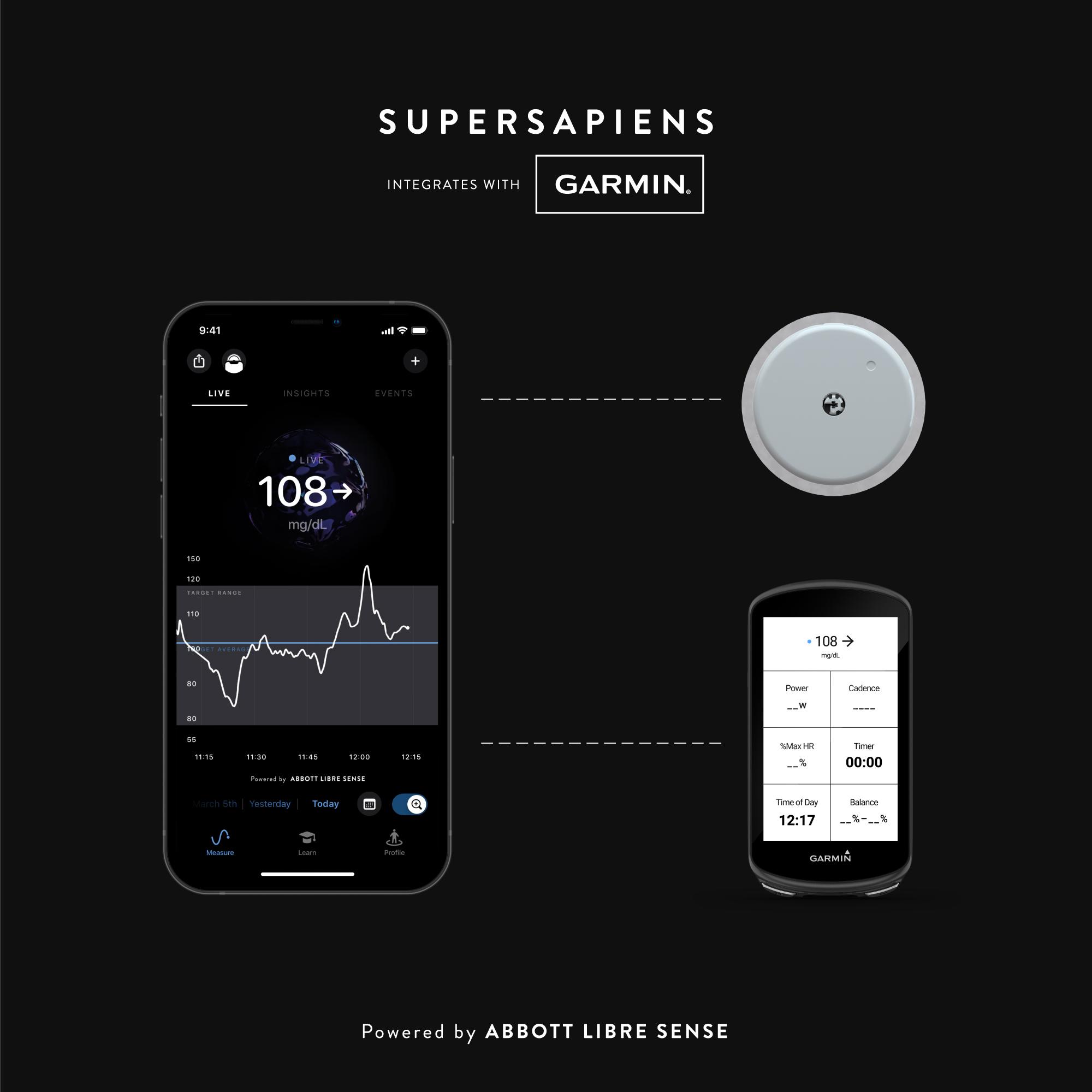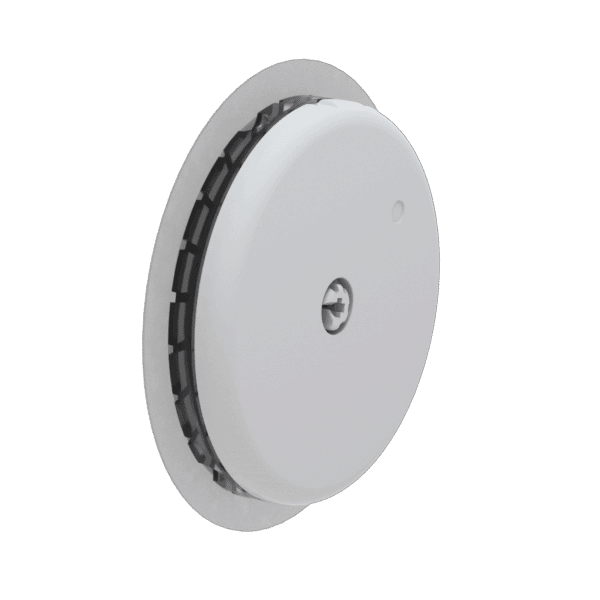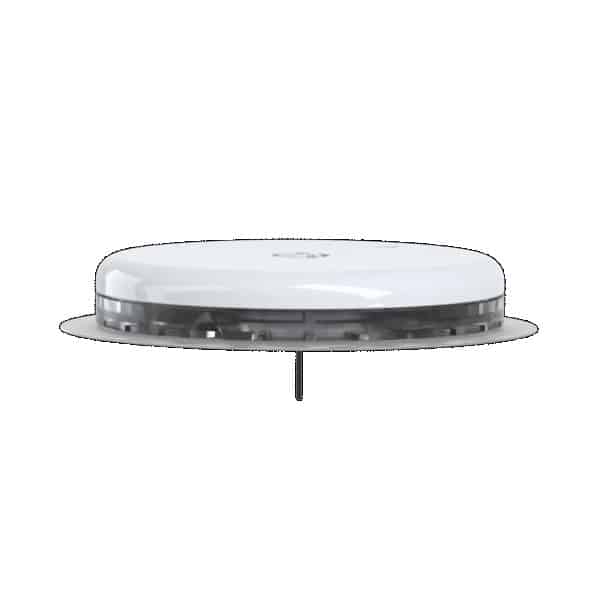Good To Know: Glucose Metabolism
Glucose metabolism follows some general rules but happens at different speeds for different foods and different people. Even if you havent eaten anything beforehand, blood sugar levels can rise during exercise as the body releases stored glucose in reaction to exercise. Depending on the intensity and duration of your workout, a value between 110 and 140 mg/dl is ideal. If you dont take on more fuel during a long ride, your blood sugar will continue to fall. At a value of 75 mg/dl you can still be feeling good but strap yourself in youre just before hitting the wall, otherwise known as the dreaded bonk.
What Kipchoge Says About It
Eliud Kipchoge is the first top runner to announce a partnership with a new equipment manufacturer. He explains more in the promotional video.
Ill learn how my glucose levels relate to my running performance. Im already seeing how quick small adjustments can make a big difference.
The world of the marathon is advancing and the knowledge of glucose in the body can play an important role,
Kipchoge already used Glucose Sport Biosensor in preparation for the marathon in Twente, the Netherlands. By the way, he won the marathon with a time of 2:04:30.
Libre Sense: What Is The Biosensor Used By Eliud Kipchoge
Kipchoge has been using the glucose monitoring technology to train for the NN Mission Marathon this weekend
In the build-up to this weekend’s NN Mission Marathon, Eliud Kipchoge has been using Abbott’s Libre Sense in his training regime. But what is it? How does it work? And where can you get one? We explain everything runners need to know about this new technology.
What is it?
Described by its manufacturer Abbott as a glucose sport biosensor, it allows athletes to track their glucose levels via a mobile app. This enables athletes to make more informed choices about their nutrition, including when to refuel to sustain peak performance.
Who made it?
The product was manufactured by Abbott, a global healthcare company, while the mobile app is currently provided by Supersapiens, an American sports technology company.
How does it work?
It uses glucose monitoring technology initially developed for people living with diabetes. Users wear a small biosensor on the back of their upper arm, which includes a thin filament inserted under the skin. This filament monitors the interstitial fluid which surrounds cells of tissues just below the skin to track the body’s levels of glucose. The biosensor then sends this data to an app on the users smartphone.
Why is it useful for athletes?
Who uses it?
Eliud Kipchoge, the world’s fastest marathon runner, recently announced a partnership with Abbott, and has been using the technology in his training programme.
Also Check: How Do You Get Type Ii Diabetes
Abbott Introduces Glucose Sport Biosensor For Athletes
Abbott has introduced a glucose sport biosensor for athletes based on its FreeStyle Libre continuous glucose monitoring technology, originally developed for diabetes patients.
Abbott has introduced a glucose sport biosensor for athletes based on its FreeStyle Libre continuous glucose monitoring technology, originally developed for diabetes patients.
The device, Libre Sense Glucose Sport Biosensor, continuously measures glucose to help athletes better understand the correlation between their glucose levels and performance.
Abbott is launching Libre Sense Glucose Sport Biosensor as a consumer over-the-counter product. The device, which secured CE Mark, offers glucose monitoring through a mobile app.
Athletes aged 16 years and older involved in sports including cycling, running and swimming, can use it to understand the efficacy of their nutrition choices on training and competition, noted the company.
Tracking and understanding glucose levels allow athletes to make necessary nutrition choice, avoiding fatigue from low glucose.
Abbott Diabetes Care senior vice-president Jared Watkin said: FreeStyleLibre changed the way millions of people manage their diabetes to get and stay healthier, and now with Libre Sense were bringing that same proven technology to empower athletes to help them reach their athletic performance goals.
Related Companies
Abbott Introduces Libre Sense Glucose Sport Biosensor In Europe World’s First Glucose Biosensor Designed For Athletes

– Abbott’s Libre Sense Glucose Sport Biosensor, with CE Mark, is built upon the company’s world-leading continuous glucose monitoring technology
– Abbott is collaborating with sports performance technology company Supersapiens to advance this first-of-its-kind product
– As part of an observational trial, two cycling teams leading into the world’s largest annual sporting event, the Tour de France, trained with Abbott’s Libre Sense biosensor to track the correlation between glucose levels and their athletic performance
News provided by
Also Check: Diabetic Fasting Blood Sugar Goal
What Is The Abbott Libre Sense Glucose Sport Biosensor
The Abbott Libre Sense Glucose Sport Biosensor is designed for sport use only and offers streaming glucose data with a dynamic range of 55 200 mg/dL for performance athletes to monitor their glucose levels. It is specifically designed for sports use. The biosensor is not for medical use and is not intended for the diagnosis, treatment, or management of diabetes or any other disease.
Through non-exclusive partnerships, Abbott plans to make the biosensor compatible with sports companies mobile apps and products which will provide glucose levels, trends and metrics to provide insights to support optimal fueling strategy and performance for athletes.
How Does The Libre Sense Work
This sensor works by placing the Libre Reader over the sensor which gives off a reading. It works similar to how a contactless credit/debit card works, with a simple connection in order to confirm the purchase.
Applying the Sensor
Recommended Reading: Athletes With Type 2 Diabetes
The Abbott Libre Sense Glucose Sport Biosensor In Detail
The sensor is about the size of a two-euro coin and affixes to the back of your upper arm via an adhesive patch for two weeks, where it isnt unduly disturbing. It has a soft synthetic filament that penetrates approximately 5 mm under the skin. To apply it, you have to insert the sensor with the help of an applicator. The process is painless and can be done by anyone themselves. The sensor is waterproof, letting you shower with it and, according to Abbott, even swim. It is activated via NFC and sends the measured blood sugar level, in a 55200 mg/dl range, to your smartphone via Bluetooth. If your smartphone isnt within range i.e. more than 10 m outdoors, the sensor stores the last 8 hours of data internally and transmits it when reconnected.
On your smartphone, the tidy and user-friendly Supersapiens app displays your data. Alongside the real-time display of your blood sugar, the current trend and history are also displayed. After a carbohydrate-heavy meal, you can watch as your blood sugar rises. The app displays whether youre in a predefined range and how far away you are from your average daily target. The app is also suited as a training tool to optimise your nutrition and eating habits during sport, letting you enter workouts, meal times and sleeping phases. That done, youll get a detailed blood sugar history for before and during your event.
What Is Abbott Libre Sense Sport
The Libre Sense biosensor is based on Abbott’s world-leadingii FreeStyle Libre continuous glucose monitoring technology, which was originally developed for people living with diabetes. Based on that technology, this is the first personal-use product that allows for use beyond diabetes.
Abbott’s Libre Sense Glucose Sport Biosensor, with CE Mark , is a consumer over-the-counter product that provides glucose monitoring via a mobile appiii to athletes performing sports such as cycling, running, and swimming, to understand the efficacy of their nutrition choices on training and competition. Tracking and understanding glucose levels enable athletes to fuel appropriately through nutrition to help avoid fatigue from low glucose and to know when to replenish during training and competition to maintain peak performance.
Read Also: What Blood Glucose Level Is Too High
Abbott Eliud Kipchoge And The Nn Running Team Collaborate In A Partnership To Track Glucose Levels During Training And Marathons
Abbott announced today it is teaming up with Eliud Kipchoge, who is considered the world’s fastest marathon runner, and the NN Running Team to support their athletic performance training program. Kipchoge and three NN Running Team members are training with Abbott’s Libre Sense Glucose Sport Biosensor to monitor their glucose levels to help them achieve optimal athletic performance. The NN Mission Marathon, a qualifying race for the Olympic Games, in Enschede, the Netherlands on April 18, will be the first time Kipchoge and the NN Running Team will use Abbott’s biosensor in a competitive marathon.
“Using Abbott’s Libre Sense has transformed my training program. I am learning how my glucose levels relate to my running performance and have already started to see how quickly small adjustments can make a big difference,” said Eliud Kipchoge, the world’s fastest marathon runner. “I am honored to work on this project, which hopefully will help athletes around the world to better understand the relationship between nutrition and performance to help them improve.”
“We’ve utilized our breakthrough sensing technology to help world-class athletes like Eliud and everyday athletes alike live up to their optimal potential,” said Duncan Williams, divisional vice president, Biosensor Technology, Abbott. “Libre Sense will help make glucose monitoring commonplace in athletic performance training and enable athletes to fuel their peak performance.”
Libre Sense: Correlating Glucose And Performance
World’s first glucose sport biosensor based on FreeStyle Libre tech helps athletes maximize performance.
Floor the accelerator in your car and youll notice two things right away: your speed goes up and your fuel goes down.
Simple, right?
It’s the same with your body and exercise. Exertion draws on sugar reserves stored in muscles and the liver.
Our bodies are the engines that make us go. While athletes who can seem like machines to us mere mortals can make themselves go higher and faster, stronger and longer, it actually works the same for everyone.
Cars have all of this built in, including efficient ways to measure both. Us humans have the basic mechanics in place, but it can be difficult to measure those ratios in meaningful ways.
Not anymore. We now have a new tool to measure our real time glucose levels: Abbott’s Libre Sense Glucose Sport Biosensor.
The world’s first glucose sport biosensor1 designed for athletes , Abbott’s Libre Sense Glucose Sport Biosensor is backed by Abbott’s pioneering track record of breakthrough innovation, medical firsts, and clinical credibility.
With its CE Mark and non-exclusive collaboration with sports technology company Supersapiens, Abbott’s Libre Sense shares glucose data designed to be compatible on a mobile app.2 It will be available in the coming weeks over the counter in eight European countries to people 16 and older through Supersapiens’ website.
Exercise And Glucose
References
Recommended Reading: Ketones And Glucose In Urine
Who Is This Libre Sense Suitable For
The Libre Sense is suitable for those with diabetes who have a more active lifestyle and want a faster reading. It is also suitable for those who dont want to be constantly pricking their finger for blood.
A clearer picture of glucose control
Libre Sensesensors monitor your glucose levels day and night. Each scan shows your current reading, the last eight hours, and a trend arrow of which direction your glucose is heading. It also has optional glucose alarms to warn you when your glucose is too high or too low.
Kipchoge As A Leader In Running Innovations

He was the man who started the revolution in running by wearing shoes with carbon soles. After that, he upgraded them by attaching a device that measured running power in watts.
Similar smart devices measuring advanced running stats are now very popular among many recreational runners.
In recent days, Kipchoge has introduced another component to its innovation portfolio a white ring on the back of the arm measuring glucose levels and streaming glucose data to compatible mobile apps.
Read Also: Continuous Glucose Monitoring For Dogs
Glucose Sport Biosensor Advantages For Runners
Thanks to the Glucose Sport Biosensor, the athlete is able to monitor how quickly his glucose reserves are depleted during exercise. This may provide meaningful insights to him. Based on that he is able to plan their replenishment more accurately. He can also make sure to be more pre-supplied so that he can start with the most efficient energy balance possible.
Knowing and understanding glucose levels in real-time can help athletes to make proper nutrition choices improving their muscle recovery adds McCarter. Several studies confirm these findings.
According to the manufacturer, the Abbott Libre Sense Glucose Sport Biosensor was also positively evaluated by cyclists at the Tour de France. They were able to accurately time their food intake and therefore maintain peak performance during the stage.
About Abbott Libre Sense Glucose Sport System
The Abbott Libre Sense Glucose Sport Biosensor is intended for athletes to measure glucose. Athletes are defined as individuals who perform exercise and train with the purpose of improving fueling and performance. The biosensor allows athletes to correlate their glucose levels and their athletic performance. The biosensor is not intended for use in the diagnosis, treatment, or monitoring of a disease.
The product is available across eight European countries: Austria, France, Germany, Ireland, Italy, Luxembourg, Switzerland and the United Kingdom.
For more information about Abbott’s biosensor, visit LibreSense.com. For more information about the app, visit Supersapiens.com.
Also Check: Lisinopril For Kidney Protection In Diabetes
World’s First Glucose Sport Biosensor For Athletes
Abbott’s Libre Sense based on FreeStyle Libre is designed for use in athletes without diabetes.
Abbott is taking its world-leading continuous glucose monitoring technology to the next level athletes without diabetes.
Called Libre Sense Glucose Sport Biosensor, the tech is CE marked and is the worlds first glucose sport biosensor designed for athletes.1
Here’s how it works: Libre Sense continuously measures glucose levels of athletes, ages 16 and up, with a small round biosensor worn on the back of the upper arm for up to 14 days. The user will automatically receive streaming glucose data, via Bluetooth® wireless technology, every minute and these data are designed to work with compatible mobile apps,* thanks to Abbotts non-exclusive collaboration with sports tech company Supersapiens.
This over-the-counter product is based on Abbott’s world-leading2 CGM technology FreeStyle Libre, which was originally developed for people living with diabetes.
But Libre Sense goes a step further, showing the potential breadth of sensor-based technology beyond diabetes management.
While the market for high-tech diabetes devices, including CGMs and insulin pumps, is approximately $7 billion the fastest growing medtech market over $1 billion3 expanding the population that can benefit from CGMs beyond those with diabetes stands to substantially broaden the market for this technology.
Why Glucose Matters When it Comes to Athletes
References
Abbotts Libre Sense Glucose Sport Biosensor
Glucose Sport Biosensor is a device that monitors real-time glucose values in the body providing the bodys molecular glucose data and turning them into meaningful insights for athletes and coaches.
Until recently, this breakthrough sensing technology collecting glucose data was only used by diabetics. This time, however, the manufacturer decided to use the same proven technology on top athletes without any health issues.
The Libre Sense Glucose Sport Biosensor was introduced by American company Abbott that has long focused on the production of diagnostic medical devices.
Read Also: Supplements That Lower Blood Sugar
What About Recreational Runners
However, the correct level of glucose in the blood is only one of many parameters of running performance. On top of that, the data obtained from these medical devices must be consulted with an expert which makes it difficult to use by the average runner.
We believe that for most average runners, it is more efficient to fuel appropriately and focus on well-designed training. To measure glucose is not the most important factor that will make you a better runner. It is the food that you eat and the quality of the training that you do.
We absolutely advise you data-based approach to running though. While you should definitely measure your running data, you hardly need such an advanced piece of glucose monitoring. Rather choose from one of the quality wearable devices that will give you plenty of advanced running statistics and insights.
If you are looking for more inspiration on how to improve your nutrition choices, read this recent article about Spirulina and its benefits for running performance. Nutrition is the key!
A Window Into Your Body
The small biosensor on the back of your upper arm uses a thin, flexible filament inserted just under your skin by the applicator. No needle is left in your arm and this filament detects the glucose levels in your interstiail fluid â a thin layer of fluid surrounding the cells just beneath your skin.
Recommended Reading: Nature Valley Protein Bars Diabetes
What Benefit Will The Biosensor Provide To Athletes
The biosensor is designed to provide a glucose monitoring experience that will enable athletes to understand the efficacy of their nutrition choices during training and competition. It will therefore inform athletes about how to fuel appropriately, to fill their glycogen stores prior to a race and to know when to replenish during a race to maintain athletic performance.9,10
Glucose Sport Biosensor: The Best Innovations For Runners

When Eliud Kipchoge, a Kenyan marathon world record holder, ran a marathon in Twente, Netherlands this year, attentive spectators could notice a three-inch small round biosensor shining on his right upper arm. The Olympic winner became one of the first professionals who started to experiment with a new piece of glucose sensing technology. A first Glucose Sport Biosensor.
The latest from continuous glucose monitoring systems, the Abbotts Libre Sense Glucose Sport Biosensor was introduced by its manufacturer in September 2020 and has already been used by multiple road cyclists. Riders from the Jumbo Visma and Ineos teams experimented with it as well during the last Tour de France.
Also Check: A1 Diabetes And Medical Supply